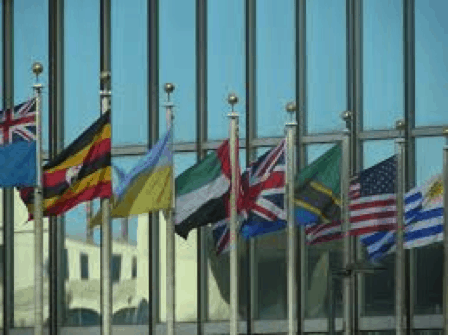With the holiday season soon upon us, HMA is sending out our season’s greetings to friends and clients who live and work far and wide across the globe. As we consider where some of our boxes and batches of packages will land, we realize the customs and traditions that are celebrated this time of year are many and varied.
And differences in protocol and tradition do not remain exclusive to the holiday season. Cultures shape how people think. Increasing our awareness of a country’s cultural norms helps to ultimately increase our insights into the ways people conduct themselves, including their leadership styles and negotiation practices.
A simple blunder regarding etiquette and protocol in a different cultural setting can cost you a business relationship or in the very least, impede your progress. By guarding against cultural ignorance, you can avoid offending or alienating a business associate or client.
One of the most relevant pieces HMA is currently dealing with for one of our clients is the communication of the idea of local service worldwide. For this reason, we translate many of our brochures to a variety of different languages, the most recent being Vietnamese. We must rely on our local contacts in each region to help us be sure our messaging is correct when thinking about how different pieces translate and appear in other languages.
In order to suggest appropriate ad copy, ad imagery, and keywords to be used, it is imperative to familiarize yourself with the business practices and communication preferences of other cultures.
As you grow in your global business interactions–making more of an effort to be extremely clear about what you need–it pays off for both you and your client. However, you must also learn that at times, silence is acceptable. Gaps need not always be filled in during a conversation, especially if your client needs time to hear and process information that is being communicated in his or her second language.
Whether it’s a face-to-face meeting or a teleconference, some considerations to keep in mind when preparing to communicate in a culturally diverse setting include the following:
- Who should open and close conversations? Should turns be taken?
- Are interruptions acceptable?
- Should silence be expected before a response?
- What are acceptable topics of conversation?
- How is humor used? In the West, it may be used to break the ice or build rapport, but is not universally appropriate. Laughter can be taken as a sign of disrespect in certain cultures.
- Know when less is more, when getting to the point quickly is expected and in what circumstances small talk is necessary as part of the communication process.
- Body language: eye contact, personal space/ physical contact
Armed with some basic research, you can avoid a cultural faux pas. By taking a proactive approach and building an awareness of cultural sensitivities and preferred styles, you can prevent misunderstandings that could impede your business relationships.
Have any tips or first-hand observations to add? Share them here.




